Under the osteochondrosis heard dystrophic process of the intervertebral disc. The spine is compressed, crushing the discs located between the vertebrae. With time, they lose their elasticity, and now tense start and the nerve endings of the spinal cord.
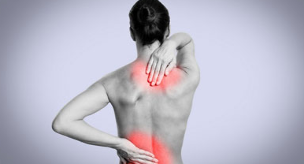
Like any other disease, the osteochondrosis should be treated under the supervision of a doctor. Then, we describe in detail what it is the disease, why it occurs and what are the typical symptoms for him.
What is low back pain?
Osteochondrosis is a disease of the spine, whose characteristic is degenerated-degenerative of the defeat of the intervertebral discs, iup tissues of the spine.
Degenerative changes in the disc weaken its outside of the fibrotic ring. Therefore, in patients with low back pain often have serious complications, such as the protrusion (bulging disc) and spinal hernia (above the nucleus pulposus of the disc into the spinal canal).
According to the results of medical research, problems with the spine knows every second man after the age of 30. In 70% of cases, the cause of pain in the spine is considered as the osteochondrosis, which refers to neurological diseases that affect the ligamentous apparatus of the spine.
Like any other disease, the osteochondrosis can not occur by itself, nor of this world, hitting the back of the acute pain. The first signs of the degenerative disc disease of the spine manifested not immediately, gradually.
According to the place of occurrence of the pain there are three types of osteoarthritis:
- The cervical spine;
- Chest;
- Lumbar.
It is important! The major complications of degenerative disc disease, belong to disc protrusion, herniation Schmorl' s, ankylosis of the spine, damage to the roots of the nerves and blood vessels.
The reasons
In the opinion of many experts, has conducted the study of this disease, the main cause of the onset of degenerative disc disease, is not properly distributed, the load on the spine. Accordingly, in patients, directly in the places, which proves to be excessive for the physical pressure, the change occurs in the structure of cartilage tissues.
The reasons of occurrence of degenerative disc disease of the spine:
- A genetic predisposition to the disease.
- The presence of diseases of the endocrine system – metabolic disorders.
- The development of disease, for example, flat feet, curvature of the posture, diseases of the musculo-skeletal system.
- A variety of injuries, lesions of the spinal column.
- Lifestyle: lack of activity, poor diet, with a predominance of dishes from fast-food and harmful products.
- The presence of excess weight.
- Bad habits (smoking, alcoholism.
- The stress, peruutusehdot.
- Pregnancy.
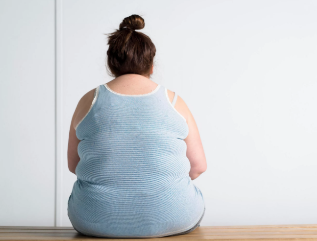
In most cases, the causes of the degenerative disc disease related to the professional activity of the person. In the group of risk are the following, the professional category:
- accounting;
- the cashiers;
- IT-workers;
- office of the personnel;
- the professional athletes;
- the drivers of the vehicles.
Noted, however, that the symptoms of the degenerative disease of the disc manifests itself often in women than in the stronger sex.
The development phase
The development of the degenerative disease of the disk occurs in the 4 key selected phase (degree):
Osteochondrosis of the step 1
Characterized by the onset of the pathological process in polipozom the nucleus of the intervertebral disc – is the dehydration (dehydration), and in the wake of the height of the disc decreases. In the fibrous ring, there begin to appear cracks. At this stage, the patient usually feels no change. The discomfort can manifest itself if unusual for a man of the seated posture, or load.
Step 2
At the second stage of the degenerative disease of the disk, a result of the degenerative changes leads to a protrusion of the disc. Reduces the gap between the vertebrae, rupture of the fibrous capsule. As a result, are the roots of the nerves are in the spinal, which causes the appearance of pain point, the intensity of which increases when the slopes, turns, and other movements. Perhaps the appearance of weakness, decreased performance.

3 the stage of the degenerative disc disease of the spine
Is characterized by a deterioration of the cartilage of the joints between the disks, a thinning of the material is well noticeable if to renthenznimky. The symptoms of degenerative disc disease of the spine pronounced, ill-omen of a more intensive nature, attack and the pain does not pass, and remove only one capable of powerful painkillers.
Stage 4
The fourth step is complicated by neurological disorders in the vertebral system in terms of partial or total of the reduced mobility of joints. During this diagnosis, a state in the place of the vertebral compounds are formed of bony growths (osteophytes), that ominous strain injuries nerve branches and nearby segments of the spine.
In most cases, the symptoms of the degenerative disease disc 4 degrees not to cause pain and discomfort, so that the joints acquire petrified view.
The symptoms of degenerative disc disease in adults
Osteochondrosis degenerate-degenerative changes and bony destruction of the spine, the articular cartilage, the ligaments of the device and the intervertebral discs. With the evolution of the disease is formed pathological mobility of the spinal column, which violated the soft tissues, nerve fibres and blood vessels located near the lesion – if the pain occurs.
The main symptoms of osteoarthritis:
- the pain in the back, cervical spine, lower back, shoulders and even the ribs;
- discomfort, stiffness of the back during certain movements, picked up anything;
- numbness of the extremities (hands and/or feet);
- the sensation of pain in the hands and feet, chills;
- the muscle spasms;
- the dysfunction of the genital organs;
- headache, dizziness;
- the pain in the heart;
- sensitivity disorders;
- muscular hypotonia;
- fatigue, sometimes, and the eyes.
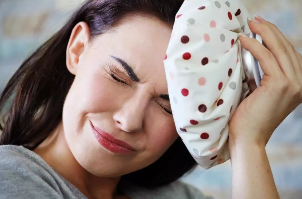
To promote the appearance of the symptoms of acute can be an excessive physical activity, fatigue, hypothermia, injuries, concussions of the body and the effects of vibration.
Complications
The degenerative process, affecting first the intervertebral discs, lead to a decrease of their density, the loss of their higher functions of damping. The consequence of these changes is the mobility excessive of the spine, are surprised facet joints, muscles and ligaments.
Involved in the destructive processes paraspinal of the structure causing the compression (compression of the spinal cord, its nerve endings. Because of the patient of low back pain feels the pain that accompanies with such symptoms and diseases:
- headache, migraine;
- decrease of visual acuity;
- partial loss of hearing;
- neuralgia (sciatica);
- vegetative dysfunction (IRR);
- the dysfunction of the genito-urinary system;
- sciatica (compression of the sciatic nerve);
- entrevertébrale hernia;
- spondiloarthrosis;
- lumbago, lumbalgia;
- osteophytosis, osteoarthritis;
- stenosis of the spinal canal.
The worst thing is that together with osteochondrosis in you start to appear and other diseases. The fact that affect vaso-nervous of the bunch, the deterioration of the blood supply, as the result of a disease of the whole organism.
The worsening of the degenerative disease disk
The spring is most often exacerbation of the lower divisions of the vertebral column, the winter intensifies in the chest department. The worsening may be when a change in the weather, stress, physical stress. During exacerbation of the disease prescribed analgesics local, ointments, medicines, relieve swelling and muscle spasms. Apply the diuretic, in case of severe edema, but at the same time, it is necessary to use drugs that sodium and potassium.
The diagnosis
The diagnosis of degenerative disc disease, is based on the following methods:
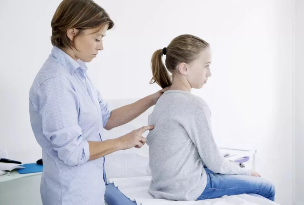
- The collecting of the anamnesis — is to examine the complaints of the patient, and the elucidation of the time of occurrence, the causes, the duration, the characteristics of the manifestation of the disease.
- Physiological of the inspection:
- performs diagnostics of the position of the body, the approach, the volume of movements of the patient;
- we studied the skin for the detection of patches of redness is, peeling, skin rash;
- palpated the painful areas to determine the local temperature, the presence of edema, muscular spasms, joints;
- for the detection of the phase of the radiation of the pain is performed the percussion finger or a hammer;
- tingling needle allows to determine the sensitivity painful.
- Tools, methods of diagnosis of the disease degenerative disk:
- X-ray diagnosis plays a role in this disease. By an ordinary x-ray shows signs of disease, such as narrowing of the gap between the vertebrae.
- Magnetic resonance imaging (MRI) is a method of research allowing you to go from a diagnosis carried out in the area of the spine process. With its help, in particular, one can define grimestone disk and its location.
- A computed tomography (CT) is close to its diagnostic ability to MRI. The disadvantage of CT is the existence of the radiation, the charge in the course of the study.
How to treat osteochondrosis of the spine?
There is not a single good method of treatment of degenerative disc disease – this process, in all circumstances, requires a comprehensive approach. If the doctor claims to the contrary, the time to reflect on his qualification and to reflect on the search for another specialist.
A full program traditionally includes the following components:
- physiotherapy is the impact;
- exercises and massage;
- the methods of manual therapy;
- the drug treatment;
- reflexology, electrophoresis, etc;
- stretching.
Recommendations in the treatment of degenerative disc disease in the home:
- The refusal of bad habits and the transition to the acquisition of habits. Smoking, alcohol lead to spasms and without pinched vessels, dorsal artery.
- Compliance with the diet — the refusal of fat and products containing cholesterol: eggs, broths, skins of birds and pigs.
- Limit the consumption of coffee and tea, gradually switch to herbal teas and fruit juices-fresh fruit juice.
- Choosing the right mattress and pillow to sleep, preferably in prosthetic restorations.
- The restoration of the circulation in Zatecka muscles and the discs in massage, self-massage, physiotherapy, compresses, grinding, and the reception of infusions, and alcohol infusions of herbs.
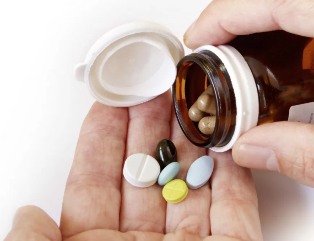
The medications of the disease, degenerative disk
Specialists in the treatment of this category of patients, to prescribe drugs with the following properties: relieve inflammation, restore the functions of the musculoskeletal system, stimulate the regeneration of tissues of the intervertebral disc, and cartilage, to prevent the progression of the degenerative disease of the disc.
The treatment of degenerative disc disease goes by the traditional route of in the treatment of many diseases of the musculoskeletal system: are appointed by the NSAIDS to resolve the inflammatory process in the tissues, chondroprotectors to restore the level of synovial fluid and corticosteroids, if the first two types of drugs have proved not to be effective.
Massage
In order to get rid of the degenerative disease of the disk, use a variety of treatments, including massages. It has many useful properties — removed the muscle tone, the blood circulation in the area of the spine is stimulated, the intervertebral discs stronger.
Manual therapy low back pain
Manual therapy eliminates acute pain, allows you to retrieve the posture. One of the most used methods is the therapy visceral. During this conference, is the study of the quality of the joints, enhances the process of blood circulation, strengthens the immune system. Helps preventing the aggravation of various chronic diseases.
LFK — physiotherapy
Physiotherapy or PHYSIOTHERAPY low back pain has a very high value. Thus, the exercises to strengthen the muscles of the back contribute to the formation of corset muscle, which in turn ensures a uniform distribution of the load on the spine. In addition, thanks to the regular activities of the circulation and nutrition of tissues, including the intervertebral disc, the patient is produced posture, increases the volume of movements of the spine.
For the physical therapy and gymnastics have brought the expected effect of the need to respect the following rules:
- Exercises for low back pain need to be performed regularly.
- All movements should be fluid and slow.
- The breathing should be smooth.
- Monitor your heart rate.
- In the case of discomfort and pain in the muscles and the spine have a need to reduce the amplitude and intensity of movements.
- Gymnastics and exercise can be practiced at any time of the day.
- For the practice of physiotherapy and exercise, choose comfortable clothes of natural fabric.
- Before you begin to practice physiotherapy and exercise necessary to consult with your doctor.

Physiotherapy
Helps to effectively fight against manifestations painful in places of localization of the pathological process. There are a multitude of varieties of physiotherapy from the impact. The most often resorted to the use of magnetic therapy, of therapy by ultrasound, as well as the effects of the frequencies of the currents.
The effects of thisprocedure can be:
- the normalization of the metabolism in infested areas;
- the increase of the resistance of the organism;
- analgesia;
- an improvement of the microcirculation in the spine and paraspinal tissues;
- the removal of edema;
- decrease the inflammatory process;
- the improvement of the mobility of the spine.
Osteochondrosis, like any other disease of the spine requires immediate treatment. At the first signs, refer to orthopedist. Be in good health!
































